-
on getting dressed again: a year of postpartum favorites
At the end of every year, I like to look back and reflect on things I bought and loved, pieces I bought and didn’t wear, what I’m looking to add to my wardrobe in the coming year and how I’m feeling about my closet and getting dressed in general. In terms of personal style, 2023 really threw me. I had a baby and despite the warnings and heads up from every single mom in my life I neglected to plan for what I was going to wear postpartum and the fact that my clothes wouldn’t fit for awhile. I truly did not own a single thing to wear postpartum other than pajamas and robes. I don’t know how I didn’t consider that I was going to come home with a new baby and a new body but I didn’t and it was a mistake. One that I will not be making again when I have a second baby!
This is a guest post by my sister Joanie. Yay! All links are affiliate.
I thought it would be fun to do a round-up of the pieces that got me through the year and that I’m still loving and wearing now. Most of these items were worn newly postpartum and transitioned with me as my body changed.
Madewell denim
a Zara sweater
Gap
Uniqlo
Lululemon
Nihil Lotan
a basic tee
a great jacket
Gap tank
a black cardigan
Timberland (sale)
Sam Edelman sandals
Madewell denim: I didn’t have time to try on a million pairs of jeans to find the perfect one so I went in the store, tried on 10 pairs and left with one. I love these jeans. They are comfortable but structured, they look great with boots or flats and I’ve worn them 150x and they still look good. Everyone is the reviews is saying they run super small. For me, they ran one size small.
A pullover striped sweater: I stuck with the classics this year. I truly didn’t buy or wear a single “trendy” item. You can find so many great inexpensive knits right now. This is the one I wore on repeat from Zara (And also machine washed and dried 25x) but I also love this from Gap (the all black is very chic!) and this Uniqlo one. I also wore this Babaā sweater so much. The pink color I have is lighter than this one but I loved it in a bright color. It somehow made me feel more pulled together in those early foggy newborn days (photo below is me wearing it at 6 weeks postpartum with Ollie in Tahoe). I also bought a sweater from Lululemon that was my favorite until I left it in the airport. I found the quality to be great and I really put it to the test. They no longer carry the one I had but I love this one in both colors.
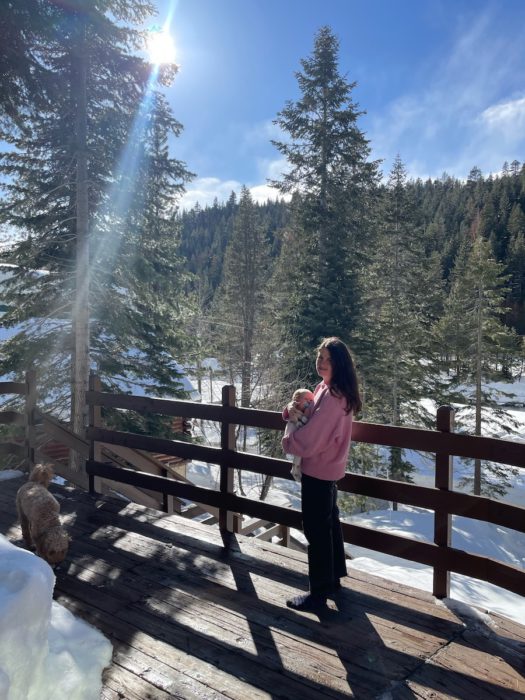
I know these Nili Lotan pants are everywhere but I bought them in the month after I gave birth and they saved me and I still love them. They are expensive but they are so flattering and comfortable and really truly so wearable. I have the navy and I think they run at least one size big. I have the size 4 and I’m more of a 6 these days.
Nice basic long sleeved tees. I bought a version of this in black and I wear it all the time.
I bought some fun coats this year because nothing elevates your look like throwing on a great jacket. This is something I believed before I had a baby and even more so now. I’m often walking the dog around the block in my sweatpants and a big coat at 7:30am and I’d be happy to run into anyone I know. This Stand Studio jacket was a real winner for me. It was so warm that it was the only jacket I needed in Tahoe and I’ve never gotten more compliments on anything in my entire life.
I found myself pulling layers of clothes off and on a lot so wanted some good layering tanks. I bought an expensive one from James Perse and this one from Gap. The Gap one is better by far. It’s long, which I love as I’m tall-ish, super comfortable, fitted and $11. Highly recommend.
I bought my first piece from Quince and I must say I’m very pleasantly surprised by how much I love it. This cashmere cardigan (I have it in black) is really beautiful. Super soft and I love it half buttoned with a gold necklace and the jeans mentioned above. Quince’s success is built on happy customers, their retention rate is insane, and that says something about the quality. I didn’t do a good job of building a nursing friendly wardrobe but this would be a really great nursing top.
The Everlane boots I’ve written about before (and that they no longer sell!) are still a favorite that I wear on repeat. They are weather tolerant, comfortable and the perfect height to wear with jeans or dresses. Nordstrom seems to be having a great shoe sale at the moment and here are a few similar ones. I love this Timberland version (such a great price!), these Uggs are a little more rugged but I like them with pants and great for a snowy climate. And these water resistant ones. I like the beige taupe color which would probably get ruined in the weather but at $70 maybe worth the risk! Also, can I just say that I love how Sam Edelman knocks off designer footwear. These very Hermes looking sandals and this Chanel like flat. I’m not sure how they re getting away with it but I’m in full support. Buying extremely expensive shoes is fun but shoes show wear so quickly and they have terrible resale value. This all coming from the girl who just got Gucci slides for Christmas! Sometimes the heart wants what the heart wants.
And that’s all for now! I’d love to hear if you had a favorite purchase from last year. If it’s still available give us the link! I love seeing what other people are wearing and loving. XO
-
pursuing a vbac with gusto
I was able to have three vbacs after an unplanned c-section with my first baby. Some of the challenges in pursuing these vbacs were the same for each pregnancy—2nd, 3rd, and 4th.
This is written out of conversations I have had with women wanting to have vaginal births after unexpected c-sections. It’s not for everyone, and the language likely won’t make much sense to you if you have not experienced what I’m describing.
This is a topic for which I feel deep empathy. I hope that my discussion of caregivers does not offend caregivers reading this. Much of what I describe was subtly implied and my focus here is on the fragility of those hoping to be brave.
Here we go.

Pursuing a vbac takes mustering together as much courage as you can and keeping that courage by your side throughout the pregnancy.
Pursuing a vbac asks you to balance the fragility you feel about your c-section and take it in hand with the hope you feel about a future birth.
It takes educating yourself about the risks which caregivers will be concerned about, and having a sense of what they are going to say before they say it.
Pursuing a vbac means making space to be disappointed when a caregiver may ask you at each appointment—“And…are you still planning to try for a vbac?”
Pursuing a vbac means digging back up the trauma you felt in your first birth, and working through it.
In my case it took acknowledging that this hope was the current deepest hope of my heart, but that it was one I was only just grasping with fragile fingers, because I also somehow believed that my ability to give birth had in fact been sliced from me.
It means going into the required meeting for your “consultation” about a “trial of labor” at a hospital knowing that you may have to disagree when/if they say, “Wouldn’t it be safer to have another c-section?”
All of this is totally worth it.
Here are some things that helped me pursue vbacs:
1. If you have mixed feelings about the care you received in your first birth, consider switching to a new hospital. I would not have undertaken this myself, but the doula I hired for my second birth sensed how hurt and resentful I was about certain elements of my care, and encouraged me to switch to a nearby community hospital.
- Reasons for leaving can be both leaving behind a place of emotional trauma, and pursuing a different type of care, it doesn’t have to be one or the other.
2. Ask for the c-section rate at your hospital. You can check it online, and it is good to ask in person as well. Ask the care providers at the hospital how they feel about their rate, and use it as a discussion tool. This is a good idea for discussion for when you go into your required consultation before the “trial of labor.”
3. Check your personal vbac success rate calculation before you discuss your plan with providers. This will give you a sense of what concerns they may have, like your weight, your previous labor experience, and your age. The facts don’t need to defeat you, but it is good to know them.
4. If you are switching hospitals, visit the previous hospital’s medical records office, and obtain the record of your birth to review with your doula or new caregiver. I went to the medical records office with my little toddler in a stroller, and we sat as the employee printed off a six inch stack of paper and handed it to me. Then I brought that to my new midwife and we talked about it together…
5. Find someone to process your c-section with. This could be a doula. This could be your new midwife. This could be a counselor, or a friend who is a really good listener. Allow yourself to mourn what hurt you about the birth, and then: let it fall away from you. After talking with my midwife, and some of the doulas that I interviewed to hire, I was shocked to find myself felt ready to let my disappointment go and move on.
6. Cleansed of some of the elements of grief and disappointment, now reflect on that birth and think about what you can change for the next time:
- For example, I decided that getting an epidural was not an option for me going into my second birth. I felt that statistically the chances of having another c-section went up dramatically if I got an epidural. So I took that option off the table beforehand, committing to myself that I would not do it. I would sometimes share this commitment and the reasoning behind it with caregivers. They would usually shrug and say something like, “Well, every birth is different.” I felt this was not only statistically misleading, but also it wasn’t helpful to me to hear it, so I did not engage with these comments.
- A decision that followed this decision was that I couldn’t be as overdue with my second baby as I was with my first (two weeks overdue, supposedly).
- So I did two things:
- First, I educated myself about my cycle and learned that I had a 31 day cycle instead of a 28 day cycle. Caregivers typically calculate your due date based on a 28 day cycle, unless you tell them otherwise. Throughout my pregnancy, I had to remind caregivers that I had a 31 day cycle to be sure they were calculating correctly. Sometimes it was correctly recorded, other times it was not.
- As I approached my due date, I asked for any natural inductions that they could offer. That meant making an appointment on my due date for sweeping my membranes.
This commitment is also what encouraged me to hire a doula, though it felt expensive (see #8).
7. While it was wonderful to have had such a happy, big 9lb 10 oz first baby, I decided it would be better for me to do what I could to have a slightly smaller baby the second time around. For my second pregnancy I tried to stop eating as soon as I was full (rather than finishing the dish just because it was in front of me) and I always ate protein first, carbs second.
- In case this is a question in your mind, I typically weigh around 100lbs and I typically gained 30lbs for my pregnancies. I gained 50lbs in my first. The birth weights for my children were as follows, the first birth was a c-section: 9lb 10 oz | 7lbs 11 oz | 8lbs 5 oz | 9lbs 1 ounce.
8. It is definitely worth considering hiring a doula. Yes, it is expensive. Yes, it could be seen as “only” self care. Even though your insurance won’t acknowledge the money saved, the fact is you could very likely go from a $50k birth to a $2k one. If you have great insurance, your doula fee may indeed be equal to what your insurance charges you for your birth. Keep in mind there are doula services offered at reduced rate for certain income levels, but you would want to research these options early in your pregnancy as they book up quickly.
But you won’t have many births in this life, and hiring an doula experienced with vbacs will very likely completely change the birth for you and your partner. Doulas like to interview their potential clients and they want you to interview them as well. So take some time to call and email people, have an interview together, and share your hopes upfront in the conversation.
That’s everything I would tell you, if we sat together and you said you wanted to try for a vbac this time. Know what you want to fight for and feel bold about sharing it, xo.
-
Breaks
I had the nicest Mother’s Day. I wanted to get up before the older girls wake, like Joe and I usually do, and have our cup of coffee outside when everything is still quiet. Yet I am a big believer in the breakfast in bed parade–there’s something formative about it–so I did go back to bed with my kindle so they could still present the breakfast that Joe made. [Scrambled eggs, plus I made this King Arthur cinnamon bun box mix the night before, let it rise overnight outside (crowded refrigerator) and then put it in the oven in the morning when I was down early–delicious.]
At some point in the day I reflected on Mother’s Days of the past when I genuinely believed that I would in some way feel more treasured and special than I did on other days of year. Lauded was probably the word I was looking for. This expectation was entirely the wrong way to approach the day because it disabled me from enjoying the tiny special things that came about, distracted as I was in seeking my Greater Meaning. These days, I’m more interested in whether our daily patterns are working for us and if they aren’t, it’s better to see that and fix it than wait for a special day to declare something isn’t working.
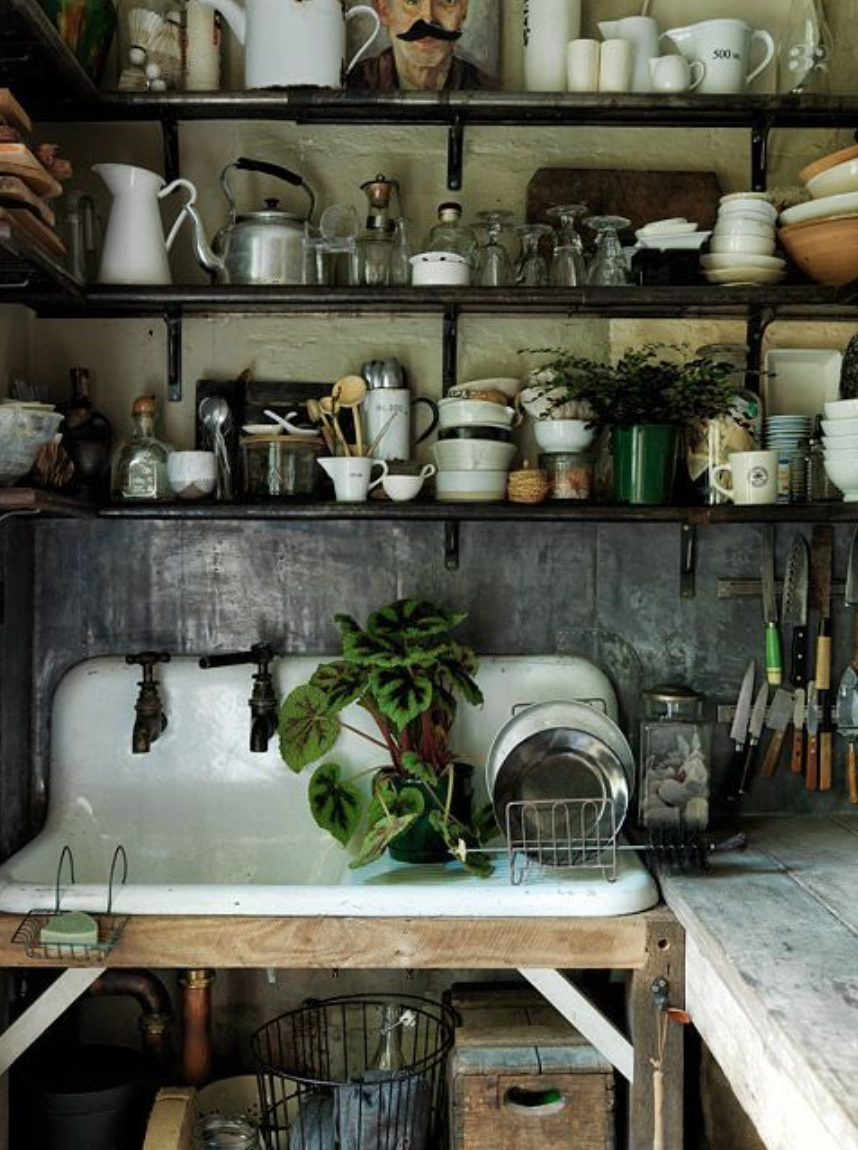
a kitchen I like to think of as at rest. Source long lost and not findable with google images.
And yet the memes about how sleep is all a mother wants still hold of course, and being allowed to sleep in, by the subversion and removal of whatever child typically disrupts the sleep first, is still by far the cheapest luxury available to the partner-giver. Why there is still a child disrupting sleep and why I’m not in a routine of waking up before this child is just one of those things. You move the high water mark and the water rises higher anyway.
For the record, the pursuit of breaks and time to reset is one of those tangible acts with intangible results that can be very effective at solving many states of child raising fatigue. A couple hours away have allowed me to return to my tasks, just as constantly circular as ever, feeling ready to engage them again. I can still recall the refreshment from when I asked Joe to stay the girls by himself for the whole day, while I went out. I went out to a long lunch by myself and then walked around like a loner and was just silent for hours. Do I like to be silent, as a person? Not really, I’m an extrovert. But it was THE thing I needed at that moment and asking for it and receiving it was transformative before I returned to the week ahead.
Taking breaks is one of the things you hear mentioned frequently by those looking back on their child-raising years. People remark that if they could have taken breaks better, it would likely have been possible for them to enjoy their children more. The idea being that most people absolutely love spending time with their kids and innately long for them to never grow up, but it’s the other things in the room that keep the adults from experiencing that truth on a cell, soul level.
But the questions are: how to decide on the break you need based on the refreshment you seek and how to go about getting it. And beyond this question, there is the sentiment that it is important to share with your children what you are doing for yourself and why you are doing it. Sometimes the postcard of “Mommy is going away for awhile” can look picture perfect, and that’s what we’re avoiding here. It should look ruthless and lonely. As a writer my intentions are also haunted by the vision of presenting children with an inexplicably closed door–this foggy memory seems to crop up often in the recollections of writer’s children.
In parenting over the years I’ve learned it plays better to share your fullest self to them from the beginning–the one that wants a break for fifteen minutes, a nap, some time with her own book, to finish her lunch without getting up for something, who forgets to and then remembers to trim her fingernails, who confesses “I don’t like reading this book aloud,” and “I’m all done playing that game but we can sit next to each other for awhile” right alongside “I can’t wait to read this together,” and “You make the best drawings of bunnies.” It’s like the plot of you can be a complete story to them this way, instead of random chapters left out. This is in the same way that it works best to introduce manners and chores as quickly as their consciousness invites it. I write that as someone who did not do it and had to introduce it later. As we sort out ourselves in the safety of our home, we’re giving them tools/stepping stones/foundation blocks (pick your metaphor!!) to sort themselves.
-
A Summer at home goals list
I’m in my two-week countdown toward full immunization. I’m planning monthly summer field trips with homeschool friends. I expect to host once or twice this summer. The girls are signed up for overnight camp. There’s a wedding on the calendar. So yes, it feels like things are “ramping up/opening up,” alll the euphemisms we use to describe the normal none of us even remember all that well now.
One particular aspect of the former normal, I’ve been thinking about friendships and how much it seems like the terms have changed. The primary and most important elements for friendship right now are patience, understanding, empathy, and…patience again. Speaking from the experience of finding myself with an irrationally drained well for sympathy, I suppose it will take pathfinding to get back to that cool meadow where we understood each other fully and felt comfortable leaning on each other.
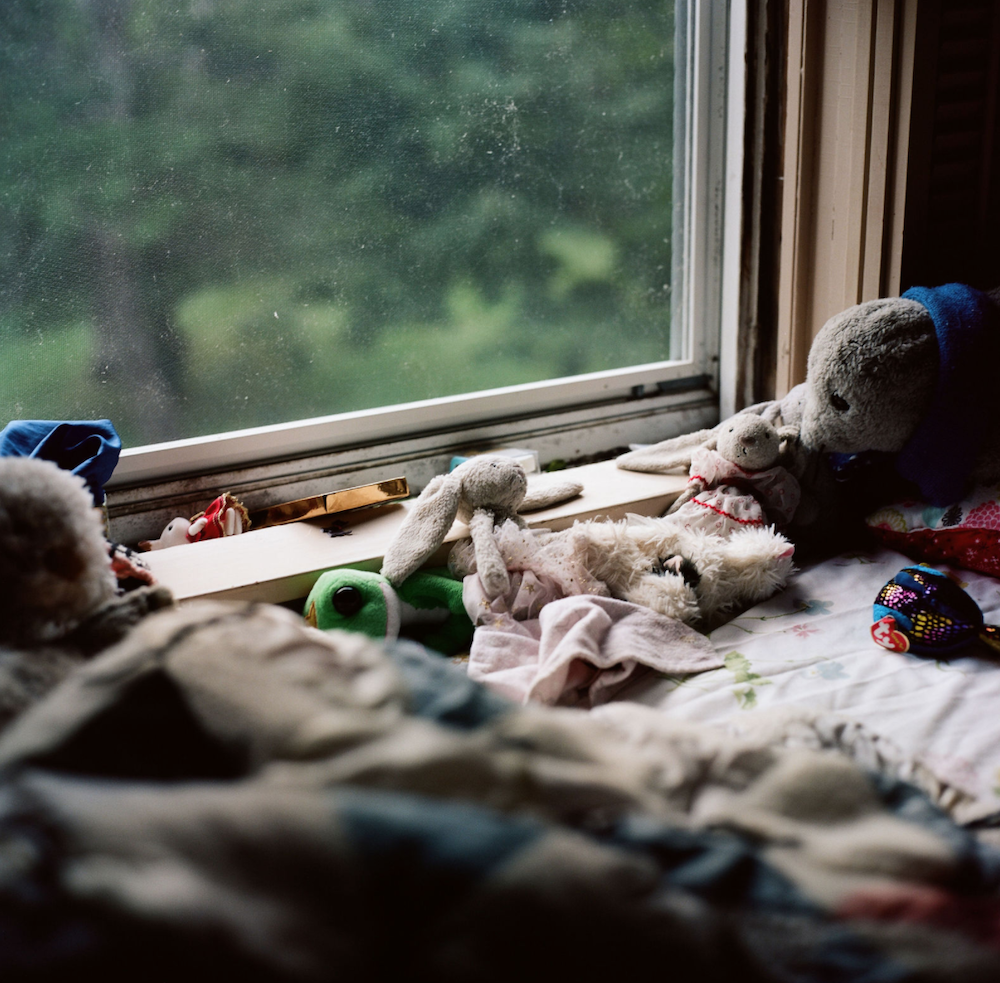
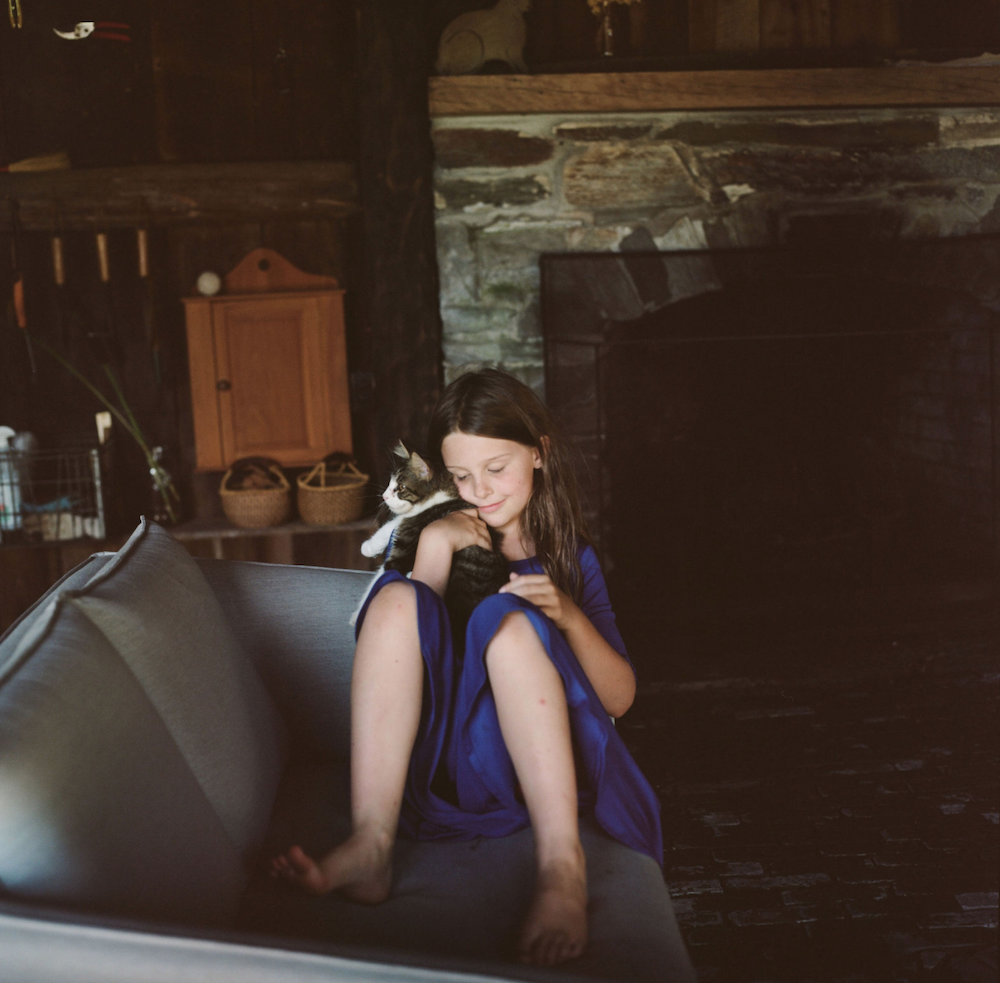
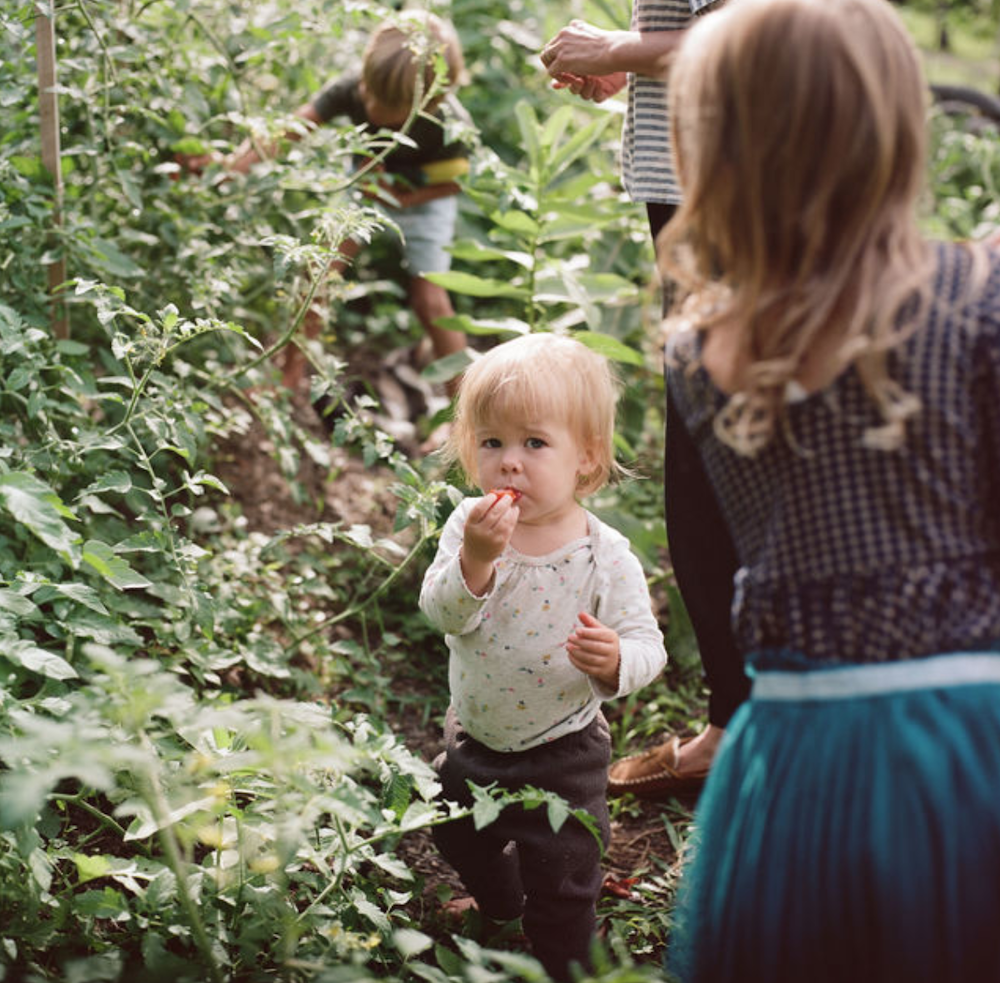
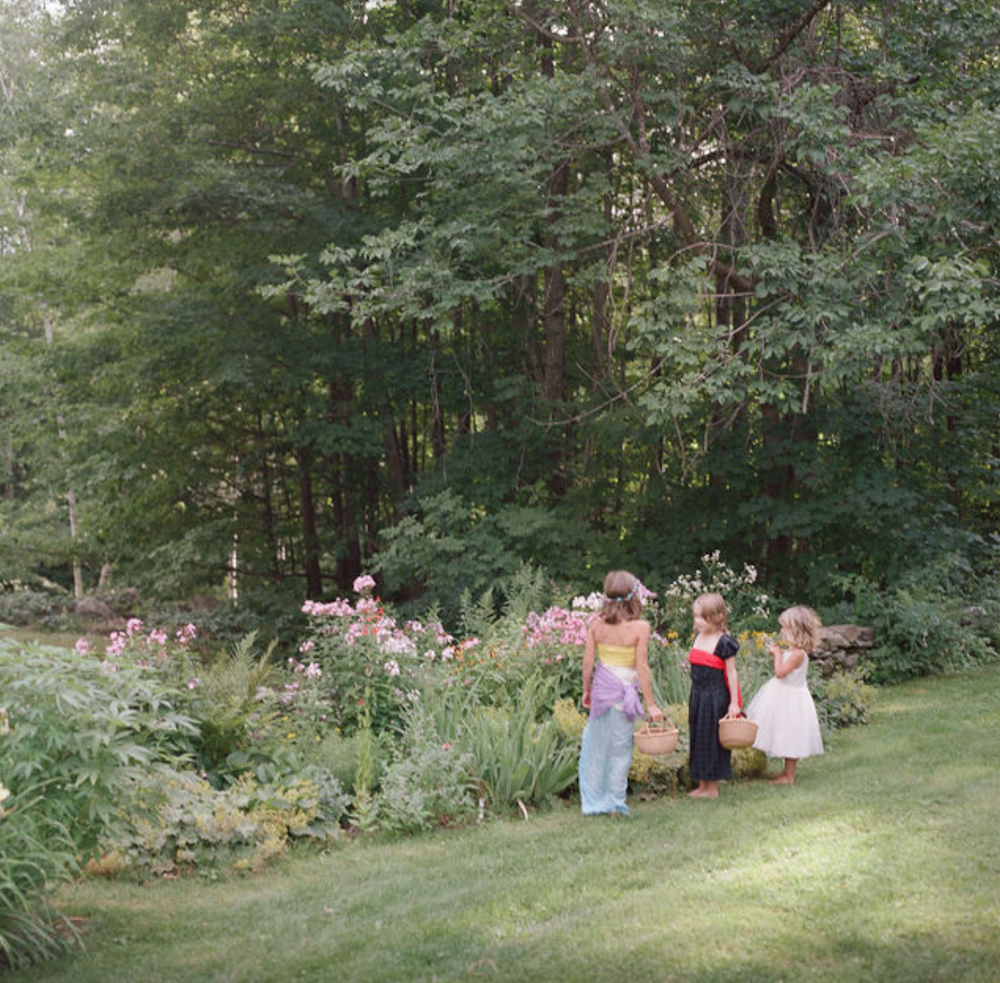
a couple things of I’m looking forward to this summer, be it what it may…
Contemplating an outdoor shower. A meditational experience that requires no action, only imagination.
Foraging more. As each season I ends, I realize which plants were the plants I was looking for, like, “ooo that was blood root” after seeing the peppy tiny white flowers by the roadside all spring. Then, the following year I come into it so ready. This year, for the first time, I was prepared for ramps and fiddleheads. I was prepared to ask my friend for nettles before they went to seed. And to ask for rhubarb at the point in the season when there was plenty to share. Forestbound’s forage pinterest board is full of dreamy wandering inspiration.
To make: day pickles. Cucumbers sliced really thin, sprinkled with salt and vinegar, and refrigerated.
To make: Popsicles, always a riff on Molly’s recipe, which itself is a riff on David Lebovitz’s recipe. Please don’t try to skip the sugar. There is something about tart raspberries mixed with chillingly sweet sugar that can’t be replicated by honey. (I don’t bother to strain out the seeds.) Her recipe makes more than enough for our six small molds. So I either put the extra mixture in the fridge and re-fill the popsicle molds after the girls have eaten them, or serve the extra as a sweet smoothie while we wait for them to freeze. Speaking of popsicles, we have these IKEA popsicle molds from eight years ago, and I thought I was in the market for an upgrade. But actually, I think I may just want a second set of those same IKEA ones. I like the size (small, very kid friendly amount), they are easy to pop-out, and the reusable sticks.
Visiting a friend’s garden. Once you begin gardening and have made a healthy amount of mistakes, you learn SO much from seeing friend’s gardens! I like to plan stop-bys in late June when everything thriving.
So. much. reading. Lux is in an online reading group this summer. Theme: Growing Up is Hard to Do. I think I’ll read all of the ones they are reading, just a week behind. A couple of the titles on the list are: The Red Pencil, Wonder, and A Monster Calls.
Potato chips with sour cream. This is the snack I put on the table outside when I’m watching adult education things on zoom. The children descend and eat until the bowls are empty, stare at the screen for a bit, stare at me to see if I’m actually interested in this stuff, and then disappear. Classical Conversations has online tutors training that I’ll be working through, notebook at my side. I’m also thinking about signing up for this natural wine conference, since we’ve been learning about growing grapes here in Vermont. Are there any online education events you’re looking forward to?
To order: a takeout burger, with fries. Thankful thankful to have an excellent burger and fries available at the Brownsville Butcher, not far from us. Soft serve too.
Making dinner in the afternoon when it’s hot and sleepy, so you can settle into your evening and enjoy the best time of day.
Watching butterflies.
Staying too late at the water (pond, lake, etc). Staying through dinner because the light and the temperature are perfect. Even if everyone cries in the car on the way home.
-
the birthday edition
 Here I am, 35. Weaning my fourth daughter, thinking about buying a lamb. Saying “last baby,” in the way that people who believe in last babies say, because they want to see it coming and say goodbye.
Here I am, 35. Weaning my fourth daughter, thinking about buying a lamb. Saying “last baby,” in the way that people who believe in last babies say, because they want to see it coming and say goodbye.Baking bread, simmering beans. Wish I cared less about messy corners.
Once I believed in no shampoo. Once I believed in all shampoo. Now I believe your body changes what it needs and you should look in the mirror and decide then.
Did I ask for anything for my birthday? yes. I asked for new slippers because I wore mine nearly every day last year and they simply gave up on day 360. I asked for oysters and a cake by mail. I received a handwritten book (“My Story” by Lux Ringenberg), a cherry wood platter sanded to gentleness by Joan, and a small box for my drawer of chaos crafted from wood and glue by Alma. There was also a sawdust cake topped with real candles and sprinkles (ferried away from the kitchen without my noticing), with frosting made from flour and water.
This week the girls learned about valkyries and watched The Ring Cycle opera which is available on the Metropolitan Opera’s streaming service. The fact that the Met has a streaming service is a thing I never would have bothered to google if not for this being week six of family quarantine. Thanks to Ronia (Netflix/Astrid Lindgren) the girls already love harpies. The valkyries seem to be an even fiercer inspiration for them to contemplate.
I did not watch it with them but I listened from the other room and overheard the selective reading aloud of subtitles. “Giant. I think that’s a giant? ‘Unless you are honest and keep your word. A simple minded giant tells you this–wise woman, heed what he says.'”
I came in to watch a few minutes. “Mom, you’ll love this, it’s so cool. It’s freezing cool.” said the four-year-old who cannot read subtitles.
If you can’t make a list of what you love in life on your birthday, when can you? A few things:
I’m in love with the anti-fragility of google forms right now. I feel like everything wonderful has migrated to a google form of one sort or another. Sign up. Volunteer. Spread the news. Let me know.
example: This farmer in Southern Vermont grows the most beautiful and obscure flowering plants of all sorts in her greenhouse, and then sells them from her front yard. She has a google spreadsheet order form posted up for spring orders. Place the order, drive and get your plants sometime in May. Bunker Farm Plants (click the link in her instagram profile for the order form.)
Bon Tucson: such a classy shop that seems to carry only the most lovely things presented in the gentlest way. I so admire their style.
The cookbooks story on Tonke’s instagram account. What a pretty collection she has, and her reviews are wonderfully precise. It’s the most recent story listed.
Our monthly coffee subscription from my hometown coffeeshop Madcap (Grand Rapids, Michigan). It is the best most delicious coffee I’ve ever had, they strive to pay more than fair trade prices to their growers, they are obsessed with quality, and they ship three bags once a month. It’s been perfect for the last year and I’m so thankful for it.
Speaking of cookbooks, Tim of Lottie and Doof told me about Midnight Chicken and it’s one of the books I happened to have with me during quarantine. My quaran-team. A thoughtful reflective cookbook filled with short memory-essays and encouraging ideas. Extremely British. It is the single reason I buy more expensive butter for toast now (strictly for slathering) than I did before.
-
striding towards eating your placenta
I confess I was not brave enough to eat my placenta but I did manage to get it home in a food-safe container and into my freezer–two big steps up from my last birth when I rolled my eyes at the midwife for suggesting I’d want to do anything with that thing. So I was delighted when my sister-in-law agreed to write about her brave entrance into the world of health-rumors and nutritional risky business. I love her medley of honest storytelling and humorous side eye at all the threads we find ourselves googling in this day and age.
Pregnancy: that time in life in which you surprise yourself again and again. The stories of strange, never-before-seen cravings and inexplicable emotions are over-told, but even still, as you watch yourself (your very normal self!) pass through each phase, it really does not fail to shock. But there are even stranger acts pregnancy invites us to than pizza rolls with peanut butter—anyone else google Evening Primrose Oil in the last trimester and stare open mouthed at the screen, reading that you can not only take it orally but also vaginally? Anyone else do it anyway?
I tend to veer on that side of things in general—I can’t resist a totally unresearched, totally natural, and allegedly miraculous supplement or an old wives’ tale that’s researched and “proven” wrong, but still sworn to be true. I’ve only been pregnant once, but the list of the things I tried during those months without (or even despite) conventional advice is pretty long:
- Megadosing vitamin c (8,000-12,000mg per day): for overall health and ~vitality~
- Blending raw frozen chicken livers into my smoothies: basically, it’s a multivitamin!
- Supplementing iodine: to make the baby smarter, of course
- Aforementioned evening primrose oil: two ways, to encourage labor
- Acupuncture during the last trimester: for “sending my energy downward”
- Collagen powder: to prevent stretch marks and perineal tearing
- Ketogenic diet: to prevent morning sickness, gestational diabetes, the afternoon slump
- Incredible amounts of very strong red raspberry leaf tea: for“toning” the cervix
- Eating raw fish, eating tons of fish: for baby’s brain
- Planned a home birth: for all the reasons people do that
Other things I reluctantly tried, but tried nonetheless: eating whole pints of ice cream with my husband just before bed, not exercising or moisturizing my skin a single time, getting out of bed in that way you’re not supposed to for the sake of preventing diastasis recti a hundred times every. single. night.
One strange pregnant-person thing that I knew I’d do from the beginning is also the one that many people tend to be most shocked by. In my second trimester, a friend of ours was over for a Bible study dinner and made a joke about how the wildest thing one might do is eat the placenta, like Brad Pitt and Angelina Jolie! There was such an expectation of communal, fellowship-building shock and horror in the joke; it filled me with such delight to say I absolutely planned to. In a different Bible study, years before, I got to know a pregnant person for the first time in my life. She glowed and glowed and then disappeared for a while, and when she reemerged she had a beautiful baby in tow. One night, less than a month before she delivered, she told us her OB had said it takes three years on average for a mother to restore the nutrients depleted during pregnancy. I’ve never found the research to back that up, but it’s always stuck with me. Sometime later, not in a Bible study, I heard about the practice of placental preservation. My first impression was that the idea of consuming the vessel by which your nutrients are transmitted and depleted seems kind of genius.
One way of categorizing the strange things I love to try is this: low risk, high reward. As of now, there are no known risks associated with consuming the placenta, when it’s properly preserved, and the list of potential benefits is impressive: Replenishing your stores of nutrients. Preventing or aiding postpartum depression. Encouraging faster healing post-birth. There are also claims about stem cell therapy, which I don’t know enough about to go into, but are extremely interesting and nothing but positive. For me, the nutrient repletion is enough. Sign me up.
People do it two ways— dehydration or freezing. There are specialists who dehydrate and encapsulate it for you, so you’re truly just taking an extra capsule every morning. The stem cell benefits are only kept intact if frozen, but for all other purposes, dehydration is absolutely fine. I once ran into my midwives’ birth assistant on the sidewalk. She was carrying a drab little lunchbox with a new mom’s placenta inside to go dehydrate. Actually, you can even dehydrate it yourself in the oven! Though then you either deal with using the powder somehow (think smoothies) or encapsulating it yourself, and that’s probably not the thing you’ll want to spend your time on in those early days.
I decided to freeze mine for the sake of simplicity: I didn’t have to hire anyone, and I didn’t have to bake anything. Homebirth made this infinitely easier for me, but as demonstrated by the lunchbox anecdote, it really can be done any which way as long as you keep it very clean. (By very clean I mean use a brand new zip-lock bag.) The most important thing is to develop a simple plan, to be fully executed by someone other than you. Talk to your healthcare provider about your plan, and designate a specific person to handle the passing of the placenta (from medical table to oven or freezer to your re-possession). Talk to your partner about your plan in case you forget to tell other people your plan. I totally forgot to do this—I had the general plan in mind but didn’t designate anyone or talk to my partner about specifics. So if I correctly recall, my muscles were still spasming from childbirth as I instructed my doula to chop and freeze it. She had never done it before, which I say to demonstrate how truly easy it is to do. My midwife stepped in to explain the process of washing it and wringing it out until it’s a “bubblegum pink color.” So she did that and then chopped it into pill-sized pieces and dropped them into an ice tray to freeze. After they froze, I put them into a zip-lock and back into the freezer. I swallowed 1-3 pieces every day, like a pill, until they were gone.
A final placental anecdote: My husband and I spent the first few years of our marriage living in Northern Ghana where he started an agricultural trading company. We had these massive windows on all sides of our living room, and I decided to start trying to grow some herbs. I had a shelf made by a local carpenter to fit the window that got the most light and gathered some seeds and soil. I spotted some pots along the roadside near our house that looked perfect and took a Ghanaian friend with me to buy them. The woman selling the pots didn’t speak much English, so I essentially mimed to communicate that I didn’t need the lids to the pots. She looked a little surprised. I told her I needed nine of them, and she looked absolutely shocked. The friend I’d brought with me often made jokes with strangers when we were out, so I didn’t think it odd that she was laughing hysterically along with an older woman standing nearby as I loaded the nine pots into the back of my car. As we drove away she just could not get herself together, and eventually she told me why: the pots I bought are made specifically for placentas. Traditionally, new fathers come to the birth site after the baby is delivered to gather the placenta into a single pot, with a lid, and bury it securely. This is rooted in the local religion, which is rooted in superstition, so really, I’m glad that all parties involved were able to laugh. The laughing only stopped when I told her about the plans for my own placenta—she was even more shocked than my Bible study friend who made the Brad Pitt joke. For whatever reason, my herbs never grew more than an inch.

Hannah’s inadvertent collection of placenta pots and cacti pictured in the opening and closing photos.
-
List Therapy
Though we’ve never met in person, I consider Amelia a close internet friend, a longtime reader, and a woman of enormous wisdom and warmth that she can’t keep from effusing through her digital self. If I could convince her to write a weekly column for us, I would! But meanwhile, her presence on Instagram is a generous window into her humble, gracious approach to life and motherhood. In her essay shared with us here, I love the way the idealism of to-do meets elevation of memory.
It all begins with the right atmosphere. There should be a decent amount of time to think and write. A favorite pen is lovely, good posture allows for penmanship you can be proud of, and no children on your lap/on top of the table/trying to chew on your pen is ideal.
This doesn’t happen to me very often.
At this point in my life, I make lists in my head, in the quiet busyness of making beds and putting dishes away and in the pick-up line at school. I forget them all by bedtime. Still, somehow, even just thinking the lists, one by one, helps me. Like taking the messy pile of thoughts in my brain and clacking them on a desk till they form a tidy stack. I feel better, even if they eventually flutter out of my brain like leaves down the street.
When I do have time to write them down, I like to keep my lists in notebooks. By now I have enough of them to line a shelf in my living room. Though I’ve never been good at keeping a diary or organizing photo albums, I can crank out enough lists to fill a notebook in a matter of months, and flipping through those old notebooks provides the same kind of nostalgia as any diary could. Who needs journals full of thoughts and confessions when you can recall exactly how life was just by looking at a grocery list you made as a newlywed? One of my favorite notebooks holds all the lists I made as I transitioned to motherhood. One page has a list of last minute nursery tweaks, and the very next contains nothing but a column of feeding times, along with which side my newborn son fed from last. The handwriting is scrawled and crooked. The page itself is literally coffee stained. It is the most accurate time capsule.
I’ve been using list-making as a way to calm myself and sort my thoughts for years. I take it very seriously. Some lists are a comforting constant, and remain the same through the years: January lists are full of health goals and house projects and so much hope. Spring lists are all about garden plans and cleaning sprees. Summer lists are few and far between, and then August lists come with a vengeance and great detail. Parenting goals! Meal plans! School supplies! Vows to reinstate order after the wild days of summer. Then the cold, dark months come and the pages holding Christmas lists and Advent activities are decorated with stars, doodled to look as bright and twinkly as possible.
Some lists are new. For example, after six straight years of being pregnant and/or nursing a baby, I am suddenly not. So, in the spirit of my newfound freedom, I dared to make a short list of restaurants to try. Date night ideas! New territory.
Some lists are ever changing and growing. I have a To Read list, a Songs for a Good Cry list, a Things I Want My Husband to Build for Our House list. The Jobs I’d Maybe Like to Have One Day list feels exciting and scary, and my heart flutters when I add to it. I don’t know if I’ll ever create illustrations for children’s books or be a Home Economics teacher, but they’re on the list and I feel like that counts for something.
It’s easy to look through my notebooks and find the times in my life where I struggled. Almost two years ago my husband and I sold our house, moved to a small apartment with our children, and welcomed a new baby a few weeks later. The year that followed was the hardest of my life. My baby cried for months, I lived in an uninspiring place that did not feel like home, and I worried constantly that I wasn’t giving my children what they needed. I longed for a home, for some peace, for some sleep. I had no time for any sort of creative outlet, and all my emotions poured out into my lists. Oh, the detail of those lists! The order! The desperation. My handwriting was sharp and upright and eager, like if I wrote down what I wanted with enough gusto, maybe it would come. Those lists are hard to look back on.
There have been other moments of struggle where my lists lose order of every kind, and instead become long, flowing paragraphs of prayer. Prayers for myself and for loved ones. Prayers for health. Prayers for clarity and faith when I feel like I’ve lost my way. I love to look back on those lists, because they’re tangible evidence of prayers answered. Problems solved. Clearly, lists are a way I try to keep control of my life. But when I re-read these lists of pleading prayer, I’m assured I’m not really in control of any of it. Thankfully.
Over the weekend my daughter became very sick with a high fever. I accomplished nothing but the basics, fretting over temperature readings and trying to keep my hot baby comfortable. I did, however, manage to make one tiny list. It was actually more of a chart— two doses of amoxicillin for 10 days, Tylenol and ibuprofen, rotated, and the times administered. That small act of writing a list gave me a little bit of control when things felt out of my control. Some order when I was worried. A stacking of mental papers. She would be better, I knew. I wasn’t really in control of it anyway, thankfully.
But, of course, the list helped.
-
my hospital bag
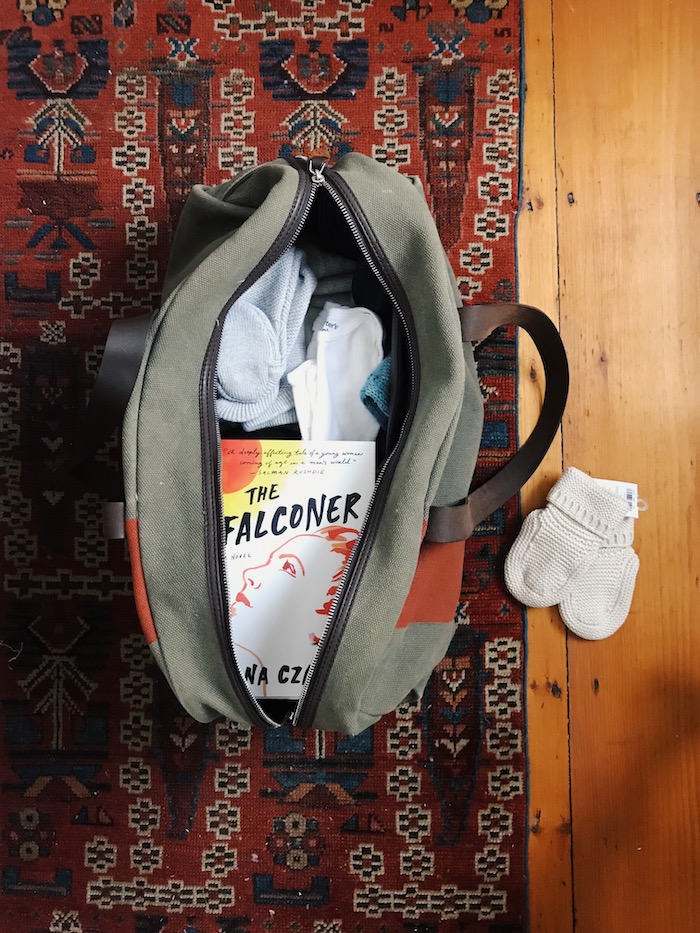
Arguably there is no better metaphor for a woman’s last grasp at self-perception before an infant than the hospital bag. Misguided, optimistic, generous, cautious—it all gets packed. My bag usually ends up being half snacks (turmeric cashews are a recent favorite and several variations of homemade granola that I could eat forever). This time I’m adding a fresh, uncracked novel.
And there’s plenty of room for error. Last time, I remember thinking we were fools not to pack several rounds of energy drinks for Joe’s hormone-free all-nighter. We’ll fix that this time. And last time, I packed lots of chocolate granola, which was delicious, but also kept me up after I ate it all up at 4 am after Alma’s birth. As I type that I realize the irony: energy for myself at the wrong time, no spare bottled energy for my partner at the right time.
It’s something akin to the old saying for a woman’s wedding composition: something old, something new, something borrowed, something blue. In place of something blue, I’d say something gently inspiring that reminds you can have a baby–whether because you did already or you simply believe that you can or someone else, like Ina May Gaskin, believes you can. This time it will be a necklace Joe gave me that has a tiny circle for each girl’s first initial. Can you believe I have four tiny pendants gently resting? Something new for me is a cozy set of sweatpants and sweatshirt that I know will feel wonderful to pull on afterward. Something old: so many things, but namely tattered slippers. Something borrowed: there are always things to reuse or borrow back in an infant’s collection of textile. I like taking arnica tablets in the days right after birth. And chapstick and face oil always seem to become rare and precious ointments in industrial-airway buildings.
Do you have favorite memories of mishaps or perfectly-packed?
-
Names
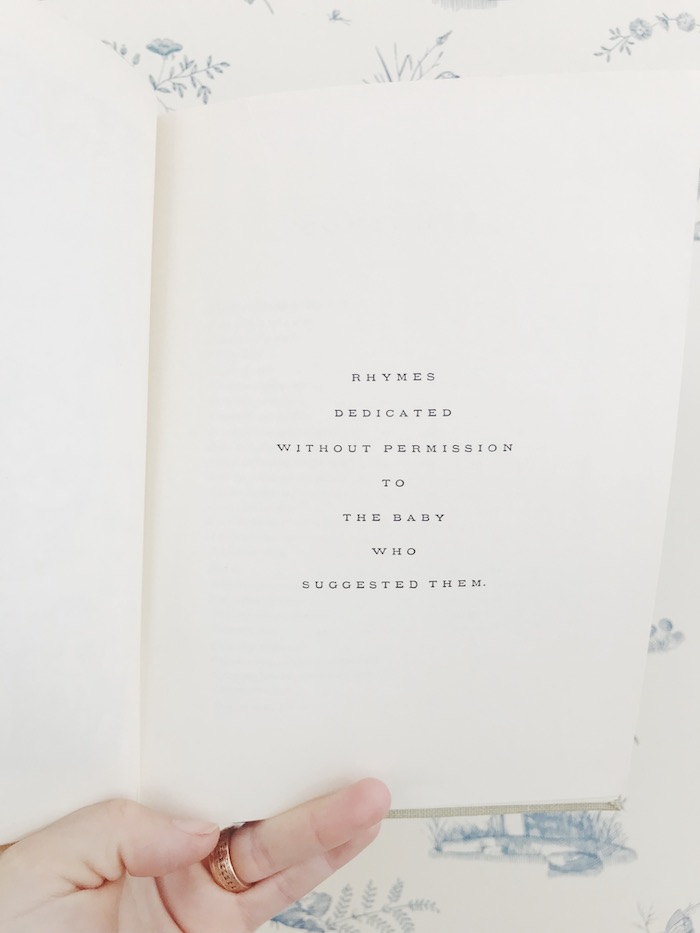
This tribute page from Christina Rossetti’s book of children’s poetry Sing-Song (1872) is the sweetest thing. to the baby that suggested them…Doesn’t that idea sum up so much?
Alongside a few serious baby names (which I could never share with you because their cradled eggshell magic would instantly crack) we always keep a running list of whatever names that sound wonderful; just in case they breakthrough into THE revelation.
Some favorites (of that list) so far:
Iris Ines
Iris Olive
Mem Fox
Mies
Annie Jump Cannon
Corbu
Renza
Names are one of those things that turn you to face the beauty of humanity. When attached to a human, every name seems wonderful, no matter how banal or unique. Saying someone else’s name brings such satisfaction. The more you say it, the more you can’t help loving them a little more as a fellow human. In the Bible there are some odd moments in the Old Testament when God says His name is I am, as in I AM has sent you to me, neatly skirting the idea of a name. And one of the ancient Egyptian myths the girls and I read this fall, Isis tricks Ra into revealing his TRUE name, which gives her all sorts of power over him and ultimately is his undoing.
In abstract bantering between expecting parents, on the other hand, names seem good, great, bad, or terrible.
-
letter from a reader
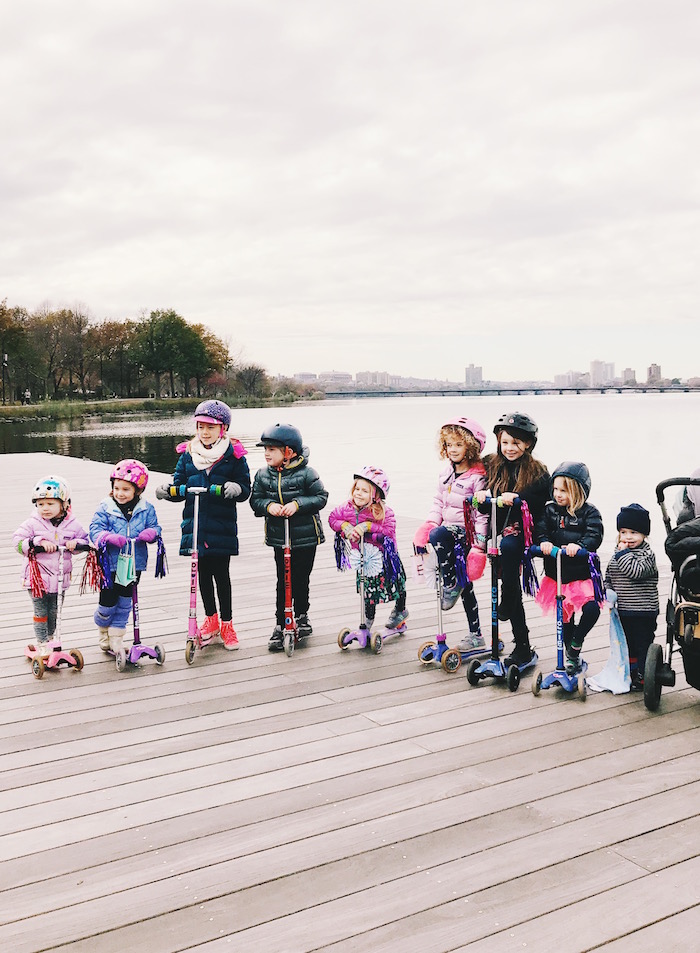
A reader recently wrote me to ask about socialization when staying at home with a three or four year old. Such good questions here that we all tumble through. I thought I would share her email and my response.
Hi Rachael,
I have been reading your blog for a long time now (do all of the emails you get from strangers begin this way? Probably.) Anyway, it’s true. Since before Joan was born!
I’m now lucky to have two girls of my own. 2.5yrs and 6 months, so we are still in the trenches of learning how to handle two kids. I’m writing because I’m considering pulling my 2.5 year old out of preschool next year. She has been going to the sweetest montessori program two days a week. It’s been good for her – and good for me to have some time with just the baby. Despite its benefits, T. is clearly exhausted by school. We will likely be moving before the next school year and the only Montessori program in our new town is 5 mornings. I’m not sure she can hack 5 days and I’m not sure I can do the get-to-school scramble 5 days in a row, especially bc Dad travels 5 days a week for work. Okay, enough about our predicament. I’m wondering how you handled socialization for your girls when they stayed with you at ages 3 and 4. Did you opt into specific programs? Hit the library story time circuit? Or just plan play dates? Do I need to join a gymnastics class or something?Another lurking question re schooling is: do you think the socialization is important for the kid? Or, mostly for mom? Having been home for almost three years, I fully know my needs for socialization and structure but I’m not sure my daughter’s mirror that. Because you’ve been on the other side of 3 years old twice now, I’m wondering: did you see this increased need for socialization? How did your child staying home blend with the choice of the majority of the families? I guess the bottom line is (and isn’t it always?): if I make this choice primarily for my sanity (not rushing to school 5 days a week), will my daughter be left wanting?Dear A,
I completely relate to your question, and absolute affirm your suspicion that five mornings a week will be too much! The needs of staying home with a 3 or 4 year old is up to the child. The fact that you’re writing at all tells me that your oldest is probably quite social, i.e. if you haven’t made any movements towards going out she might ask, “What are we going to do this morning?” In this situation, which was the case with my eldest as well, I tried to plan things 2-3 mornings a week. Typically I planned these things a week in advance, or over the weekend. 2-3 mornings give you that every-other morning off to stay at home, which is important.
Regarding the concept of/concerns about of socialization as a whole: when Lux was entering kindergarten at age five her new teacher expressed concern that she would have trouble adapting to the school environment. Not because of anything the teacher had observed in her, but because it was assumed if you haven’t been adapting slowly over time, then it’s going to take awhile to fit in. But she adapted immediately, listening with delight to instruction and thriving in the structured environment–both a welcome change for her from home life! She had never had another adult as an instructor, so it was a novelty and she was intent on listening carefully. She’d never had the chance to observe peers for extended periods of time, so she came home and recited all the odd things other children did.
She returned to me in the afternoon exhausted (cranky, snippy), unaccustomed to mingling with her young sisters, and eager for individualized attention. (This compared to what we had before. Our life was outburst free before school-fatigue set in.) “That’s so crazy!” her teacher remarked when I commented on this, “She’s an absolute dream at school.”
Therein lies the great school conundrum. Group-think, traveling as a pack, chatting and running with a gang of children is really fun. But every day for eight hours, it is completely exhausting.
Joan attends a local Classical Conversation group that meets once a week (as they all do). (Find one here by typing in your zip code.) She loves her teacher, her presentation time, and adores her group of seven buddies, as well as her recess time with older kids. She is tired out by the end (1pm) and enjoys the rest of the week at home, asking about her class only one or two days before it begins again. Everything in moderation is the great boon of home life. Had I know about this program when Lux was four, I know that she would have loved it as well.
I remember being at the playground with Lux when she was four and a local day care would show up. She told me she was envious of all the kids running around together. I was sensitive to that longing, but I also don’t think she realized how joyfully she giggled and plotted with her little sister all day, the long uninterrupted moments she spent paging through books on my bed, the stories she quietly told herself as she drew for far longer than “art time” would have allowed.
In my extremely limited experience I have never observed a child who did better because of earlier adaption. Personally I follow research that suggests the more children are one-on-one with adults, the better they do in social settings with their peers. The more they are only with each other, the more unstructured (and natural to their age–selfishly) they behave. (One of the best books written on this idea is from 1989, Dorothy & Raymond Moore’s Better Late Than Early, but you can read some of their ideas in this article as well.)
However, I have seen children who parents are not comfortable with discipline of any kind. They are unwilling to say no to their child and do not follow through with any of their voiced threats/consequences. They are eager for the relief and enforcement of other adults in their child’s lives. In this circumstance, I completely understand that a school/structured environment would return a better behaved child to the home.
Moving to a new town and opting-out of preschool means you will have to be a little aggressive with grabbing folks’ phone number initially. And just shrugging it off when lots of people you meet either work or does not have their child with them in the morning. I promise that there are other people choosing their own adventure education-wise, but it might take some digging to find them. In a new town, an organized class is not a bad idea because you’d have that initial organized chance to meet other moms. However, I find most programmatic things (even library story times) do not offer a chance to get to know other moms. You end up spending the time interacting with/managing your child and their expectations rather than chatting. But a library story time was the place I first met several of my best local mom friends when Lux was little. That was because I aggressively chatted up two interesting women with babies the exact same age, then I suggested we go out for coffee afterwards, and finally one of them said we should trade numbers. We never went to the library together again, instead we met at each other’s houses for the next year.
Ideas of things I would plan, as you feel the need:
-The library on consistently the same morning, probably not the morning of story time (when it is often flooded with people). If I met anyone there, I would say “see you here next week?” or I would exchange numbers, and text the day before, “Planning on the library tomorrow, will you guys be making it out?”
-A standing playdate. These are fantastic because they don’t require planning ahead of time. Ideally you create a loop and host every 3-4 week, but trading off works too. Making coffee and muffins for friends or trying out a craft on a lark is much more fun than by yourself. My friend Noelle–who, it must be said, lives in California–met up at a park with a friend she met via Instagram. They called it Preschool Breakfast. She says…
We would meet once a week at a park (actually the coffee place next to the park first). We would both pack snacks for the kids to share, which they loooved and of course always wanted the other kid’s snack first. Azusa and I would talk about cooking. We would always ask the kids what they had for breakfast that morning, but they almost never remembered. They ended up at different schools now but we still hang out once a week!
-Babysitters: I have always felt best when I’ve had at least one three-hour babysitting session a week. Not for errands, but for adult consciousness things; anything restful and mindful. Reading magazine at the bookstore. Calling an old friend. Writing at the library. Sitting in my car on Pinterest. Take some of the money saved from preschool and put it toward this endeavor. I like coming back just before nap time/quiet time. Emphasize to the sitter that she is not entertaining them but is playing with them, following their lead, stepping back one they are happy enough by themselves. That way when you come home T. won’t act like she just got dropped off after a morning at the fairgrounds. When you hire this weekly sitter, make it clear you will need one or two tasks done during the time as well–all the dishes, tidying the office, vacuuming the living room. This is what you would ask of yourself, so it’s not too much to ask. But it is easiest asked upfront.
-Errand-Coffee-Walk In the words of 600sqfeetandababy, “My cup of coffee is one of the only things I do for myself each day and therefore I love to treat it very seriously.” (I can’t find where she said this, but I love this quote and have remembered as best I can.) If you have a weekly mom-scheduled jotted down, even something of the groceries-coffee-walk variety becomes a “thing” full of the rewards of accomplishment and fresh air.
Please feel free to respond to my admittedly extremely-limited experience with thoughts in the comments. I have some other emails I’m going to dig up and post here as well. If you have a question too, feel free to email me at rachael.ringenberg@gmail.com. x
 by
by  by
by